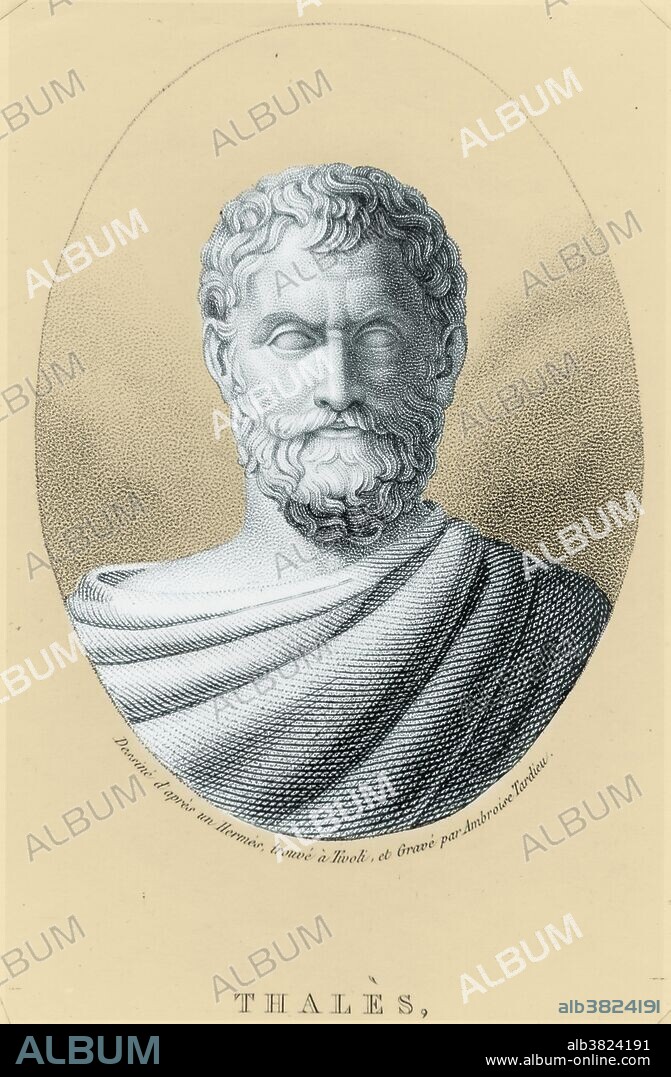alb3824191
Thales of Miletus, Sage of Greece

|
Zu einem anderen Lightbox hinzufügen |
|
Zu einem anderen Lightbox hinzufügen |



Haben Sie bereits ein Konto? Anmelden
Sie haben kein Konto? Registrieren
Dieses Bild kaufen.
Nutzung auswählen:

Titel:
Thales of Miletus, Sage of Greece
Untertitel:
Siehe automatische Übersetzung
Thales of Miletus (624-546 BC) was a pre-Socratic Greek philosopher, mathematician, astronomer, the first identifiable scientist and one of the Seven Sages of Greece. Thales attempted to explain natural phenomena without reference to mythology and was tremendously influential in this respect. Thales' rejection of mythological explanations became an essential idea for the scientific revolution. In mathematics, Thales used geometry to solve problems such as calculating the height of pyramids and the distance of ships from the shore. He is credited with the first use of deductive reasoning applied to geometry, by deriving four corollaries to Thales' Theorem. As a result, he has been hailed as the first true mathematician and is the first known individual to whom a mathematical discovery has been attributed. He is reported to have predicted a solar eclipse in 585 BC, and tried to explain earthquakes.
Bildnachweis:
Album / Science Source / Photo Researchers, Inc.
Freigaben (Releases):
Model: Nein - Eigentum: Nein
Rechtefragen?
Rechtefragen?
Bildgröße:
2550 x 3894 px | 28.4 MB
Druckgröße:
21.6 x 33.0 cm | 8.5 x 13.0 in (300 dpi)
Schlüsselwörter:
 Pinterest
Pinterest Twitter
Twitter Facebook
Facebook Link kopieren
Link kopieren Email
Email
